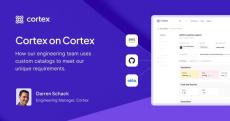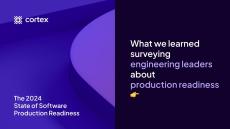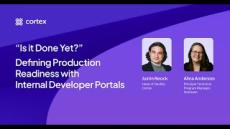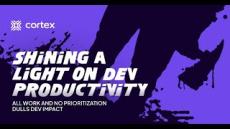|
By Lauren Craigie
Software quality isn't just about defect density; it embodies the reliability, performance, and security that underpin digital trust and user satisfaction. But measuring software quality can be as challenging as defining it. In this post, we'll demystify the complexities around assessing software quality and provide actionable insights for you and your software development team.
|
By Cortex
Developers are working to faster development cycles, having their productivity measured in embarrassing ways and facing burnout due to poor productivity metrics. Detecting and preventing bugs in this environment is challenging for developers, but code quality is too important to ignore or leave to chance. Improving code quality requires smart metrics, not just more measurement. The quality of your code is foundational to your software, and ultimately your products and company.
|
By Ganesh Datta
On December 31, 2008, all the Microsoft Zunes around the world stopped working. The development team hadn’t properly accounted for the Leap Year, and when the year changed over, everything broke. On February 29, 2024, card payments in a Swedish grocery chain went down, payment terminals in New Zealand gas stations crashed, and an EA Sports racing game was rendered unplayable for the day.
|
By Cortex
After decades as a software engineer, I’ve seen firsthand how complexity can grow exponentially with scale. Thankfully, over that time, quite a few tools have come along to help manage some of that complexity. One great example is the Internal Developer Portals (IDPs), which were built to connect an engineering organization’s architecture, processes, documentation, and definitions and alignment to standards of health.
|
By Cortex
Faster software development cycles means greater reward, and greater risk. Organizations that lose sight of continuous alignment to standards risk delayed launches, higher risk of churn, and higher costs—not to mention unproductive and unhappy developers. Building a strong production readiness review process can help, but existing tools and frameworks haven’t made it easy to keep up to date with the increased velocity at which software is expected to ship.
|
By Cortex
When speed to market can make or break a business, the move from monoliths to microservices has become an obvious choice for many engineering teams. This transformation promises agility, scalability, and the ability to more closely align with business functions. It is why we see organizations moving from the rigidity and restrictions of monoliths to the flexibility and control associated with microservices architectures.
|
By Cortex
Already a quarter of the way into 2024, we’re seeing a lot of shake-up in on-call best practices. We’re excited to see AI in the mix, but we’re also seeing a renewed focus on existing and neglected best practices. Some current topics in on-call best practices include: In this article, we’ll review some best practices and explore the 2024 trends.
|
By Cortex
It's been a decade since Marc Andreessen declared that software is eating the world, and it is still hungry. Customers expect software solutions for every need, driving digital transformation in every analogue industry. Software quality is now fundamental to company reputation, directly affecting customer satisfaction, brand and overall business success.
|
By Cortex
Containerized microservices have been the gold standard for cloud computing since they replaced the monolith architecture over a decade ago. The flexibility, scalability, and velocity they enable for teams make them an obvious choice. Yet, a strict interpretation of one service for one function doesn’t quite serve everyone, especially when architectures get large. We’ll discuss how flexibility in service architecture might be the way to go.
|
By Cortex
Software complexity makes it harder for teams to rapidly identify and resolve issues. IT service management has evolved from an afterthought to a central part of DevOps. Microservices architectures are prone to delay or missed identification of such concerns. Monitoring mechanisms need to keep up with these complex infrastructures. Maintaining reliability and performance while harnessing this complexity requires a considered, data-driven approach.
|
By Cortex
98% of engineering leaders reported at least one major consequence of failing to meet production readiness standards. To better understand how teams are addressing new challenges in production readiness, Cortex recently conducted a survey of engineering leaders at companies with more than 500 employees in North America, Europe, and AsiaPac. The survey included questions pertaining to production readiness standards, tools, struggles, and desired future state.
|
By Cortex
DevOps solutions have evolved quickly over the last few years. Software catalogs have bloomed beyond service registries and runbooks into comprehensive, centralized engineering sources of truth. With ever-expanding developer tool sets, can teams achieve the flexibility needed to address this fragmentation while continuing to tailor software catalog entries to their unique domains and contexts?
|
By Cortex
While we know software projects are never truly “done,” developers will, nevertheless, often face a long list of tasks needed to achieve a certain level of “doneness.” But to what end? And when do they end? When is done—done enough? In this fireside chat-style webinar, Justin Reock - Head of DevRel for Cortex - alongside Alina Anderson - Principal Technical Program Manager at Outreach - will explore an evolved approach to determining production readiness.
|
By Cortex
Lauren Craigie (Head of PMM at Cortex) is joined by Justin Reock, Head of Developer Relations at Cortex for a conversation about meausuring developer productivity.
|
By Cortex
In 2023 most engineering organizations have some way of measuring productivity. Metrics like story points and cycle time help us assess team-wide impact, while code coverage and commits tell us more about individual contributions. While we know these numbers don’t tell the whole story, we rarely hear about how to find the missing pieces. Or what to do next when we learn the culprit is poor testing practices versus bad design. What’s the plan for improvement? Where does it live, and who owns it?
|
By Cortex
In the last 5 years, we’ve watched the world's fastest growing engineering teams ditch development monoliths in favor of service-oriented architectures that speed time to market. And as microservices multiplied—making it harder to track ownership and quality—Internal Developer Portals (IDPs) emerged to help. But while the prospect of a single portal for developer productivity sounds enticing, veteran leaders know the perception of “one more tool” can make org-wide adoption challenging.
- May 2024 (4)
- April 2024 (7)
- March 2024 (8)
- February 2024 (4)
- January 2024 (8)
- December 2023 (7)
- November 2023 (8)
- October 2023 (10)
- September 2023 (8)
- August 2023 (6)
- July 2023 (3)
- June 2023 (4)
- May 2023 (5)
- April 2023 (3)
- March 2023 (5)
- February 2023 (4)
- January 2023 (5)
- December 2022 (6)
- November 2022 (8)
- October 2022 (8)
- September 2022 (4)
- August 2022 (1)
- May 2022 (2)
- January 2022 (1)
Cortex makes it easy for engineering organizations to gain visibility into their services and deliver high quality software.
Cortex helps engineering teams build better software at scale:
- Align your team and drive accountability: Scorecards enable teams to drive what matters most to them – including service quality, production readiness standards, and migrations.
- A single source of truth for your services: Cortex’s service catalog integrates with the most popular engineering tools, giving teams an easy way to understand everything about their architecture.
- Build a culture of reliability and high performance: Teams enable organizations to drive a sense of ownership and pride as they improve service quality.
- Ensure new services follow best practices from day one: Scaffolder lets developers scaffold a new service in less than five minutes using custom templates crafted by your team.
Cortex gives organizations visibility into the status and quality of their microservices and helps teams drive adoption of best practices so they can deliver higher quality software.





















